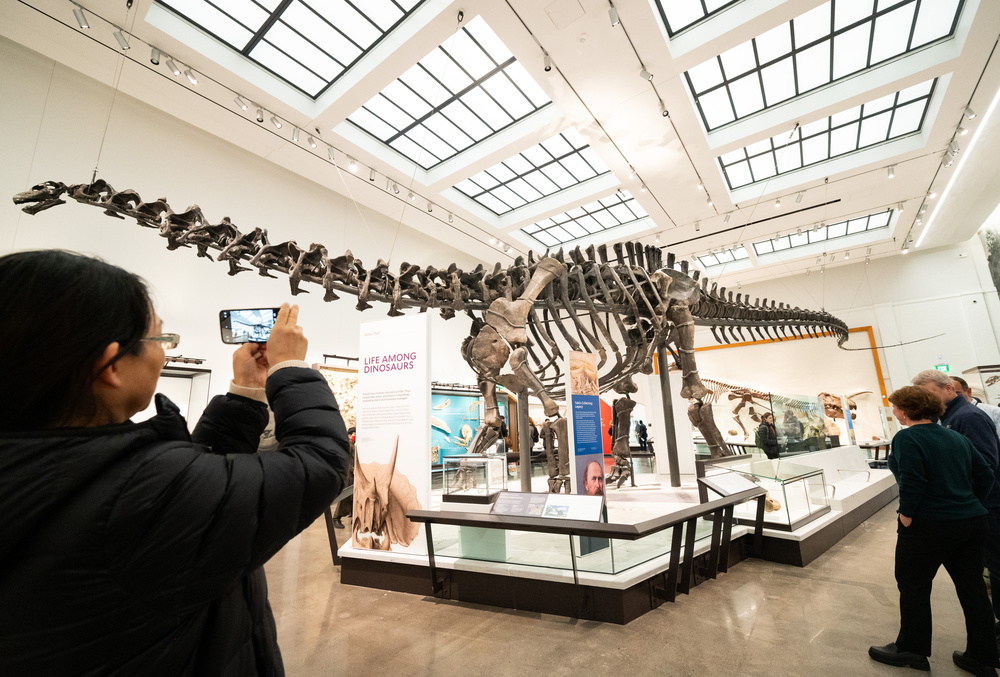Last-Minute NYC Holiday Gift Guide 🎁
We’ve created a holiday gift guide with presents for the intrepid New Yorker that should arrive just in time—

See artifacts rarely on display to the public on a virtual tour of the recently reopened Yale Peabody Museum!

Scientists have learned a lot about dinosaurs over the past 150 years. We now know that they laid colored eggs and some dinosaurs had feathers, to name a few fun facts. The latest discoveries in paleontology and other sciences have informed how the Yale Peabody Museum in Connecticut now displays its historic collection after a major four-year renovation. Opened to the public in March for the first time since 2020, the Yale Peabody Museum now has 50% more exhibition space where visitors can see some of the 14 million objects from the museum’s collections on display, for free!
On August 15th, join Untapped New York Insiders for a live virtual tour of the museum where you will see recently opened exhibitions and items rarely on display for the public! This virtual tour led by Susan Butts, the Museum’s Director of Collections and Research, is free for Untapped New York Insiders. Not an Insider yet? Become a member today with promo code JOINUS and get your first month free!
The Peabody Museum of Natural History at Yale University was founded in 1866. “The Peabody Museum was one of the first museums of its kind in the country,” says David Skelly, Museum Director, “It’s older than the American Museum of Natural History and the Field Museum. When these university museums were set up…science was based on evidence, evidence lived in collections, and collections lived in museums. For our museum, certain collections go right back to the beginning and were enormously important for understanding the earth.”
“Growing up you tend to think of museums as old, dusty sorts of things, but these museums were big innovations in their time,” Skelly continues. That innovative spirit and celebration of evidence-based science are what the newly renovated museum seeks to channel today. “The museum is focused on telling stories about current research that’s going on and reshaping what we understand about the earth and its culture,” Skelly says. This mission is exemplified in the new presentation of the “Yale Dinosaurs,” one of the museum’s oldest and most famous displays.

The Yale Peabody Museum is home to the first discovered specimen of a Brontosaurus, Stegosaurus, and Triceratops. The Brontosaurus was found in the 1870s in Como Bluff, Wyoming, and named by Othniel Charles Marsh, the first Professor of Paleontology in the United States and the first Peabody Museum director. The assembled bones debuted in the newly constructed Great Hall of the museum in 1931 and for the next 90 years, it didn’t move.
After being restored, reconstructed, and remounted, the dinosaur now stands in a dynamic new position informed by knowledge gained since its initial discovery. The skeleton stretches 75 feet long, six feet wide, and 16 feet tall. Its extended tail has been lifted off the ground and now hangs snakes through the air above visitors’ heads while its neck is inquisitively outstretched. This engaged posture depicts the creature as being more active and nimble.

In addition to the famous paleontological collection, nine other distinct collections are represented at the museum. With new exhibition spaces spread over three floors (instead of two previously), there is more room for recent acquisitions and never-before-seen items from these collections to be displayed. The largest selection of never-before-seen items can be found in the brand new 3,655 square-foot Hall of the Pacific. As the second largest space in the museum behind the Burke Hall of Dinosaurs, this exhibition contains 254 artifacts, photographs, and works of art from Pacific Islander communities.
Another artifact on view for the first time is a cyclotron particle accelerator from the History of Science and Technology Collection. This piece of technology invented by nuclear physicist and Yale PhD graduate Ernest Lawrence was integral to the creation of the atomic bomb and how we study atoms today. “It looks like a steampunk movie prop,” Skelly shares, “Realizing that this [tool allowed us to] learn how to do all these things that absolutely changed the world, that makes the hair on the back of your neck stand up.”

More captivating collection highlights, like the world’s oldest cookbook, a strange lichen discovered by Charles Darwin, and the cast of a colossal Olmec head, can be found in other galleries throughout the museum. All permanent galleries in the museum, including the dramatically lit and mineral-filled David Friend Hall, are now open to the public. A temporary exhibit space will open later this fall.
Along with its new gallery spaces, the Yale Peabody Museum renovation project also added new education spaces for visiting K-12 students and graduate and undergraduate Yale students. These new spaces and upcoming programs make the collections more accessible to teachers and curious students.
The Yale Peabody Museum is free for all! See museum hours and book tickets in advance here. Visit the museum without leaving your home by joining us for a live virtual tour on August 15th!
Next, check out Top Secrets of the American Museum of Natural History
Subscribe to our newsletter